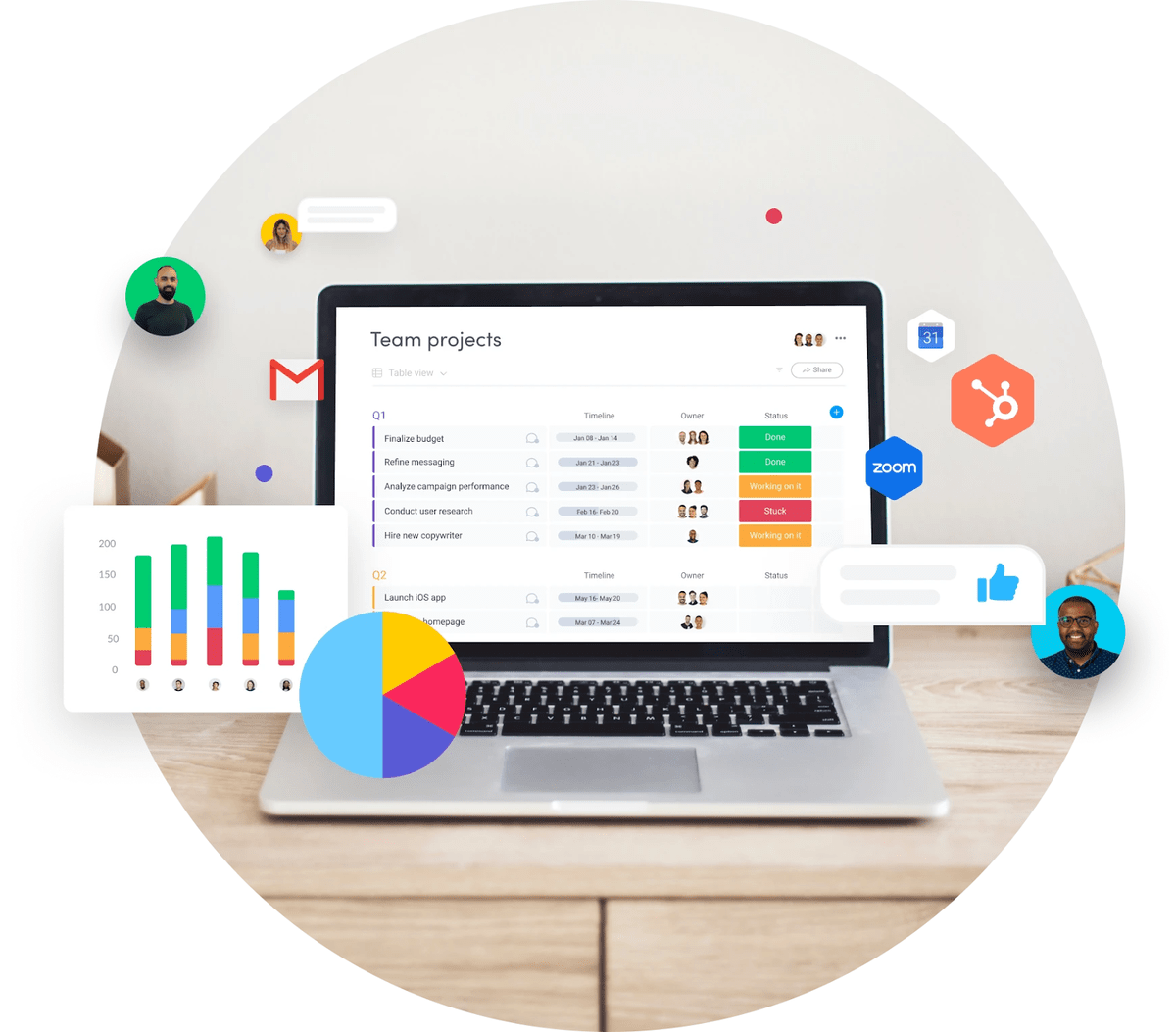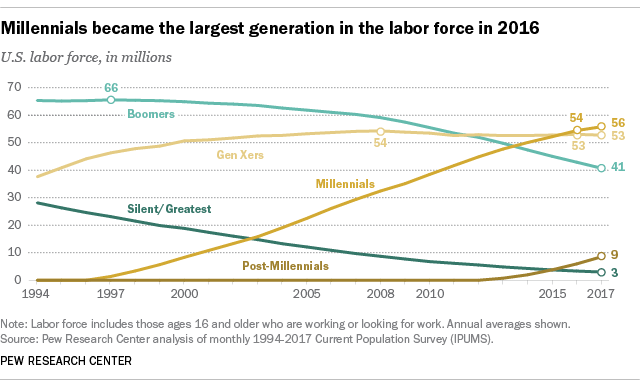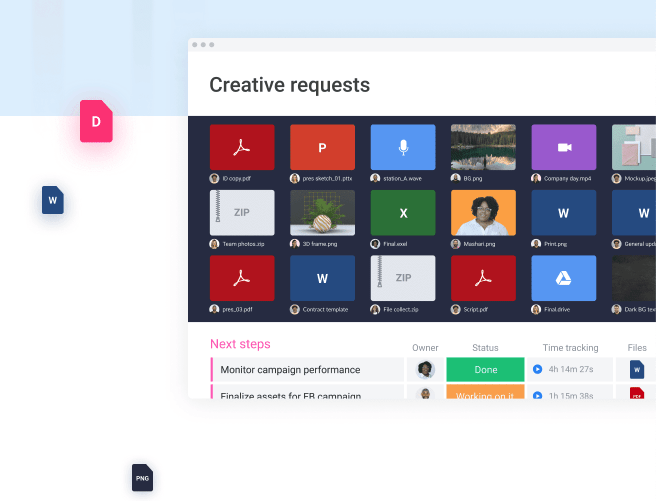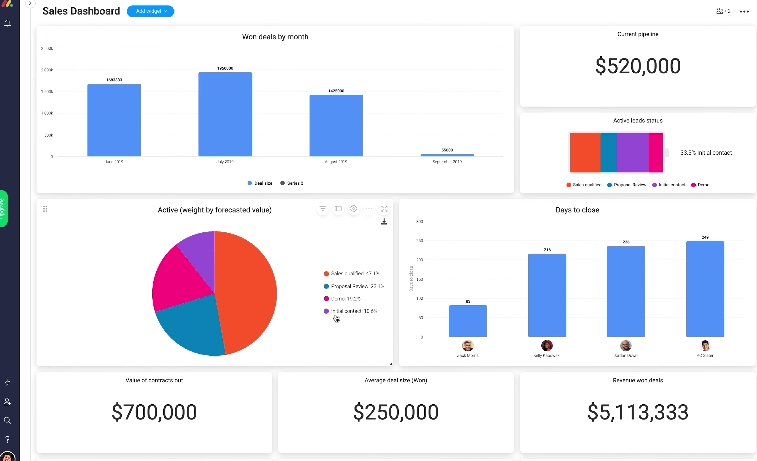In a year filled with countless annoying circumstances, the cyclical disruption to the work environment has got to be up there with the most annoying — especially if you’re a manager.
At this point, half of your employees are probably desperate to be back in the office, and the other half have already eloped to the Canary Islands to carry out their duties on a beach from their laptops.
So how can a manager establish a happy, comfortable, and productive work environment for employees in the context of today’s dynamic and unpredictable working arrangements?
In this article, we’ll cover everything you need to know about work environments, alongside some proven strategies for creating great ones, for both remote and non-remote teams.
What is a work environment?
We all have a work environment. That’s true whether you’re stuffed into a suit and tie in some corporate high-rise or in your PJs at home with your cat and a laptop.
Work environments are typically thought of as the place in which one does their job, but they aren’t limited to physical spaces.
A work environment includes the physical, digital, and emotional landscape of the space in which you perform your job duties.
Company culture and management structure typically govern the nature of a work environment. Higher-ups tend to design work environments — either intentionally or unintentionally — based on the cultural leanings of the company and the personal preferences of management.
For a company like Google, this means table tennis and nap-pods, as they want to create an environment that is relaxed, engaging, and creative — not to mention one that brings you into the office as much as possible for more productive hours.
However, the boundaries of our work environments are becoming increasingly broad, with remote work becoming almost universal across teams and departments since the pandemic.

Even Google has edged closer to ditching the nap-pods in favor of a distributed work-from-home policy.
This raises an important question for managers and employees alike, given that the work environment of an entire company varies so greatly in this day and age.
How do you create a positive, productive, and effective work environment for all of your employees?
Whether your employees are remote, back to the office, or a mix of the 2, there are consistent red flags for a bad work environment that should be noted before going about designing one.
3 signs of a bad work environment
It’s common to see evidence of some of the following in a typical work environment now and then. But if your workplace environment consistently features more than one of these red flags, you may be dealing with a truly toxic situation that needs managerial attention ASAP.
1. High employee turnover
Employees joining and promptly leaving a company at a high rate is a code-red symptom of a hostile work environment.
Before taking a deeper look at the potential causes of a bad work environment, you can simply assess the employee turnover rate compared to the average in your industry to understand if something isn’t right.
2. Bad communication
Productivity and effectiveness require great communication, not to mention the social and psychological necessity of open and honest discourse.
Inattentiveness, mixed messaging, and poorly channeled communication are all things to watch out for.
3. Zero growth or employee engagement
Take a long look at the position of the business over the years and the disposition of employees.
If all hope has left their eyes and the company isn’t making meaningful steps toward growth, that sounds suspiciously like a stagnant, toxic workplace culture.
You should now be able to spot these tell-tale signs of a bad workplace environment. So let’s do something about it.
There are many strategies, software tools, and principles you can apply to improve conditions and design a healthy work environment. Here are a few examples for remote and non-remote companies.
3 strategies for non-remote companies
The challenge of creating a great working environment for traditional, non-remote companies is providing excellent facilities, arranging employees logically according to relevant workflows, and instilling certain social values that are conducive to sanity.
Here are our top suggestions.
1. Provide an agreeable workspace
Needless to say, the physical office environment matters when it comes to workplace happiness. Those who have had to do their work on the kitchen table or next to their bed during the pandemic know this better than anyone.
As your employees will spend the majority of their waking day in the office, it should be designed with comfort and utility at the forefront.
Ensure proper food and drink-making facilities are installed, the seating and desk setups are functional and comfortable, and there’s adequate space to relax when not performing work duties.
Beyond that, consider the fundamental changes you could make in order to adapt to the changing workforce. Since 2016, millennials have been the largest generation in the U.S. workforce, with Gen Z entering the picture in recent years.

How could you accommodate the preferences of a younger workforce? An emphasis on decor, natural elements, and technological connectivity are a few examples.
2. Introduce workflow clarity
Being familiar with your function in the wider context of the company and understanding how you are connected to other operational teams is essential for feeling comfortable in the workplace.
When it’s not clear how your work propels wider company productivity, your duties can seem boring, repetitive, and ultimately redundant.
To avoid this sense of meaninglessness, it’s useful to track the impact of an employee’s efforts on the company.
You can do this by using software to design workflows that visually represent an employee’s position in business projects and tasks. This will provide a sense of meaning and accountability.
Furthermore, as a manager, you get oversight into the functional flow of work across teams for more precise management.

monday.com: Gantt charts
This seems like a good time to talk about the incredible power of a good Gantt chart, a workflow visualization option on monday.com’s Work OS platform.
We’ve designed a flexible platform to plan, track, and execute your projects visually.
By representing projects on Gantt charts, your employees can see and understand how they fit into the larger company workflow and the contributions they make.
This is great for creating a nicer work environment and even better for getting things done.
3. Give employees flexibility in the workplace
How do you account for the preferences of every worker when creating a great work environment? Well, you can’t, so a better strategy is to simply allow them to do what they want — within reason, of course.
More than anything, employees want autonomy. Gone are the days of endless cubicle farms. Employees seem to be happiest when they are allowed to create a micro-environment that works for them.
That could be allowing them to personalize their office space, hot-swap desks to change the scenery now and then, or even letting them work from home entirely if the situation allows.
This brings us to our next section.
3 strategies for remote companies
Are you ready for the new world?
Like it or not, remote work, telecommuting, work-from-home — they’re here to stay. This makes the duty of creating a good work environment even more challenging and even more important.
Here are 3 strategies for doing just that as a manager of remote employees and teams.
1. Centralizing communication
Terrible communication practices were a sign of a toxic work environment. When employees are distributed across the country, perhaps even across the globe, getting communication right becomes even harder.
Remote companies and teams run the risk of so-called information siloing, where important information is shared only in internal subgroups instead of the wider company — avoiding decision paralysis and preventing collaborative action and decision making.
This is why we suggest centralizing all work-related communications to one digital space.
This way, every team member is on the same page and up to date with the latest changes, removing any feelings of isolation and encouraging collaboration.
You may think that’s impossible, as different teams, clients, and contractors use various social tools like Slack, Zoom, and Whatsapp to communicate.
Thankfully, there are software solutions that can address this.
monday.com: social integrations
We understand the dangers of closed communication loops in businesses, so we like to keep it open. Our platform is designed to be friendly with a whole universe of social apps and communication platforms connected with integrations.
Connect Gmail, Slack, LinkedIn, Zoom, and many more to your monday.com dashboard and use them all from the comfort of your digital workstation.

2. Improving resource accessibility
There’s nothing more frustrating than having the ability, time, and motivation to nail your tasks or projects but not being able to access and use the right resources to get the job done.
This presents a unique challenge to fully or partially remote companies.
If the workforce is distributed, where can you store your important files and resources, and how can you do it in a way that protects the company’s security and privacy?
Finding a digital solution to store, manage, and share your important files and resources with the appropriate team members is a foundational requirement of effective remote work.Ensure you use a project management tool that utilizes secure cloud storage technology for this very purpose.
monday.com: file sharing
monday.com offers file-sharing services that can improve your remote working environment.
With simple drag-and-drop functionality, you can centralize all of your files to one platform that all relevant employees can access.
Manage client and team permissions easily and quickly, and enjoy ISO, GDPR, and HIPAA-certified security while you do so.

3. Readdress company values
Your employees aren’t just with you for a salary and benefits. They sought out your company because they agreed with your mission and aligned with your values.
In remote arrangements, though, this can often get left behind. Employees who are distant from the core goals and mission of the company can easily become productivity drones that will struggle to find fulfillment in their positions.
To that end, our final tip is to ensure that your employees are reminded of their purpose and the wider company purpose.
This may involve re-writing your mission statement or offering monthly progress reports that summarize the ways in which you have achieved your stated goals that month.

Remember to be open and transparent with company successes and failures. By doing this, you create the genuine impression that your employees’ thoughts and contributions matter, which goes a long way.
Workplace wellness
With everything that’s changed recently, we’re bravely wading into uncertain waters.
And like all good pioneers, we must plan and prepare for every outcome and ensure no one gets left behind.
If you’re a manager, you have new responsibilities to take care of beyond your normal work scope. Namely, creating a great work environment in today’s dynamic, digitally-infused workplace landscape.
Flexibility, transparency, and order should be your core values as you venture into the unknown.
But don’t underestimate the power of a centralized, connected digital workspace. It just might be the key to the perfect work environment, whether you’re in the office or at home.
Find out more about our remote work solutions here, and enjoy a 14-day free trial — no credit card needed.


